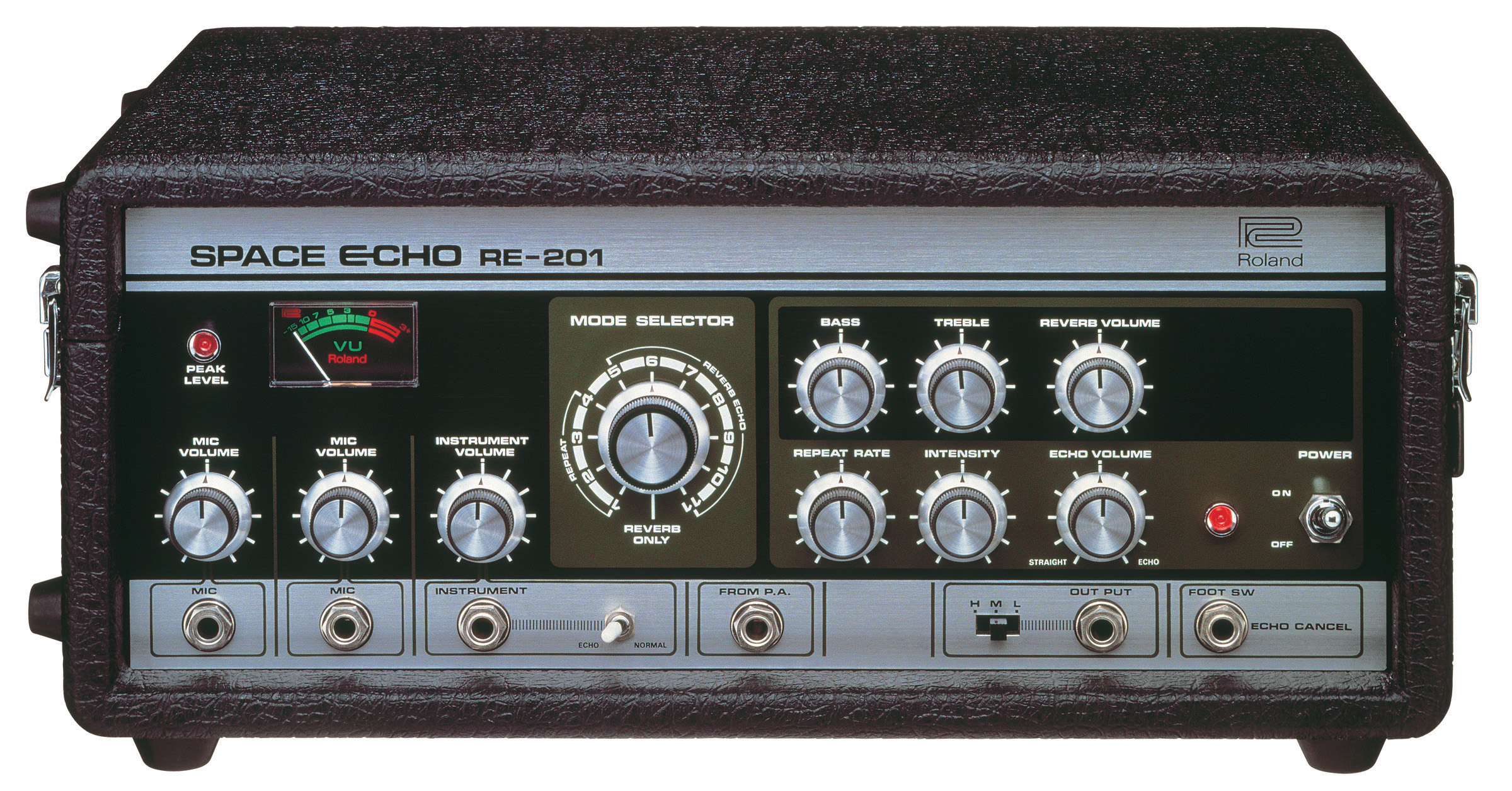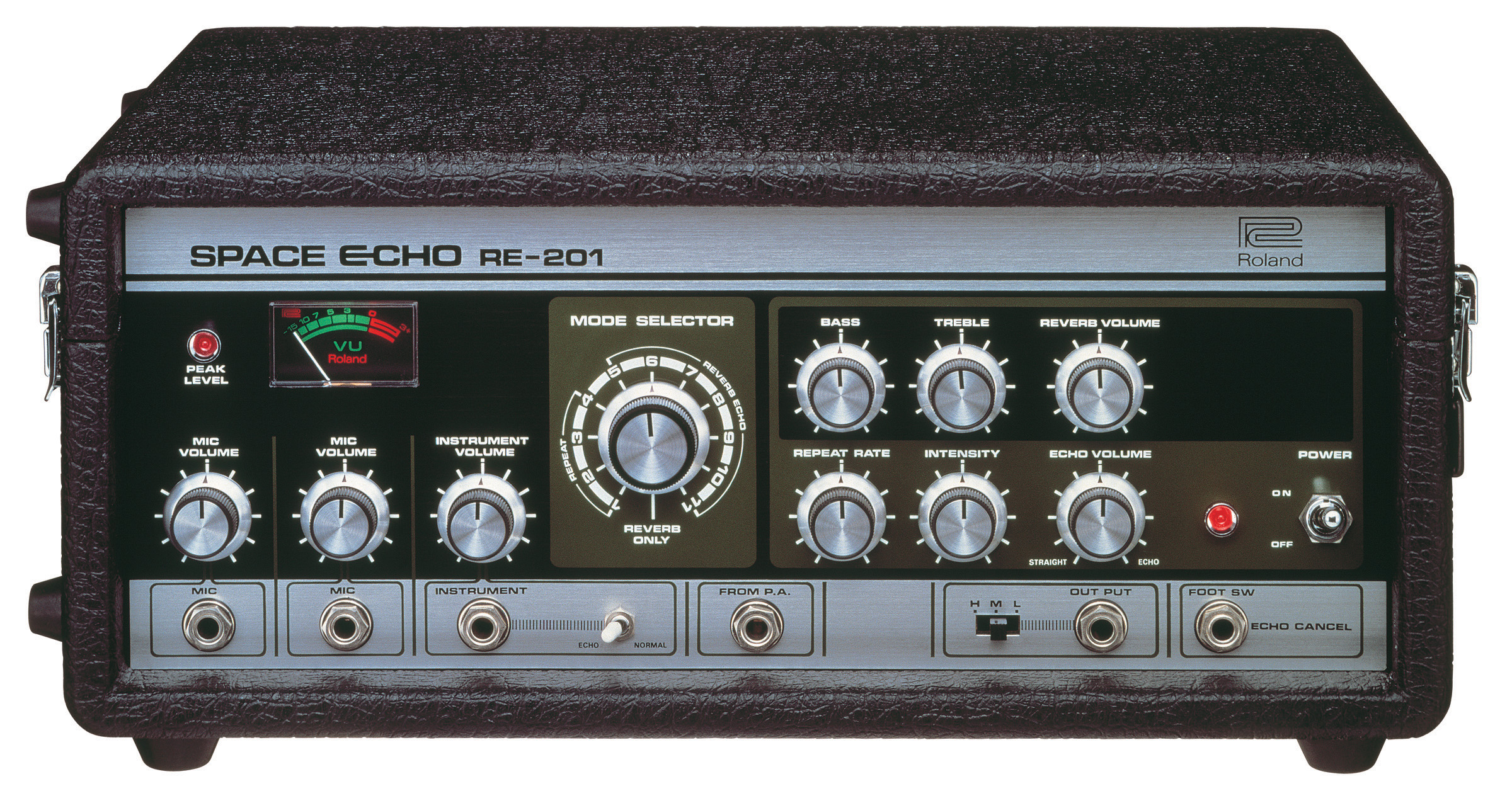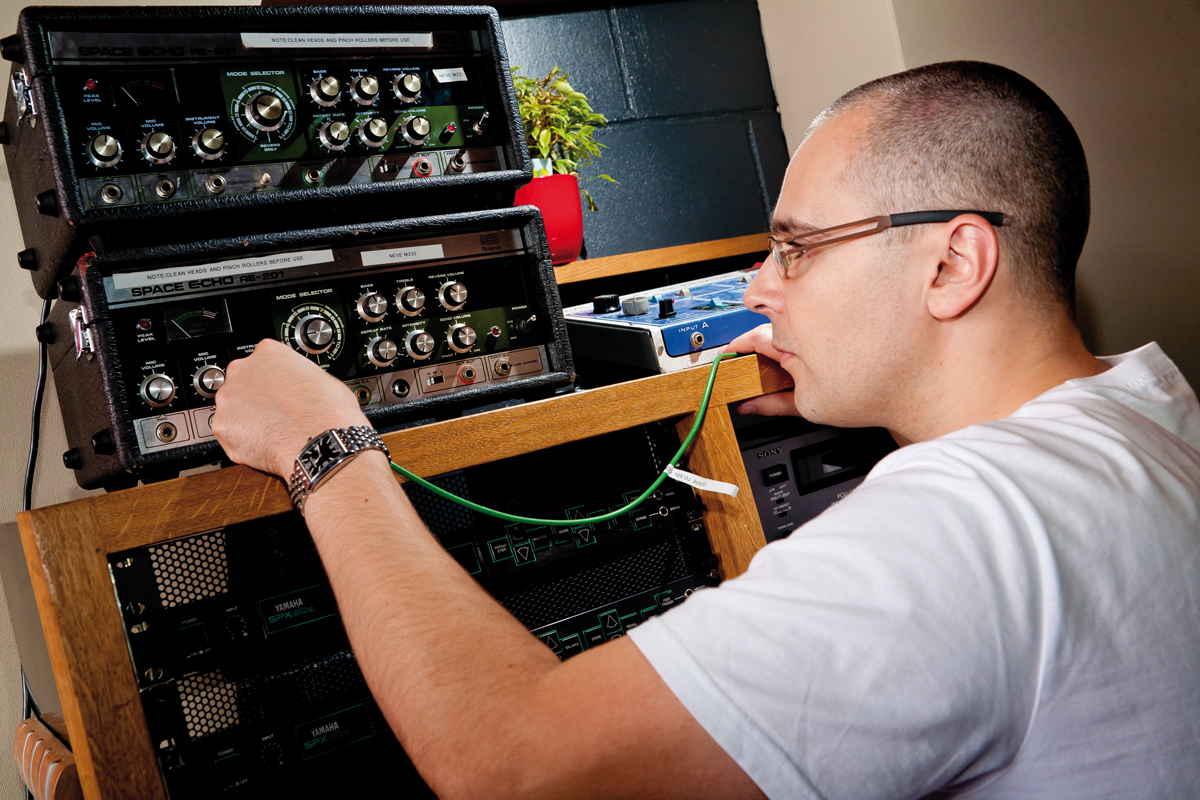Vintage: Roland RE-201 Space Echo
We take the flexibility and convenience of software delay for granted now, but back in 1974 things were done rather differently. John Pickford explains. Portishead engineer Stu Matthews: “You can’t beat them for that warm, saturated sound that you can only get from analogue tape.” Tape echo and delay are among the oldest effects used […]

We take the flexibility and convenience of software delay for granted now, but back in 1974 things were done rather differently. John Pickford explains.

Portishead engineer Stu Matthews: “You can’t beat them for that warm, saturated sound that you can only get from analogue tape.”
Tape echo and delay are among the oldest effects used in pop production; however, during the early rock ‘n’ roll era of the 1950s, engineers had to create the effect using the record and replay heads of standard professional tape machines. That’s how Sun Studios’ Sam Phillips popularised the slap-back echo effect on those classic mid-50s recordings of Johnny Cash and Elvis Presley. Les Paul, the inventor of multitrack recording, began experimenting with multiple tape echo effects as early as 1950, but it would be another decade before dedicated tape delay units such as the Watkins Copycat and Maestro Echoplex appeared.
The RE-201 was launched in 1974, replacing Roland’s earlier models the RE-100 and RE-200 and becoming an instant hit with engineers. The Space Echo makes use of a continuous loop of 1/4-inch magnetic tape housed in a tape chamber at the top of the unit, while a capstan drive motor transports the tape over the record/replay heads. The system works by recording audio fed into the unit, then replaying the signal via a series of playback heads until further incoming audio erases the signal. Three input channels are provided on 1/4-inch jack connectors, along with a jack output and headphone socket.
There are several user controls that adjust the style of echo, such as the echo/delay time and repeat rate, while a three-spring reverb allows a reverberation effect to be used in conjunction with or independently of the echo settings. An 11-position Mode Selector rotary switch selects the type of echo and/or reverb desired, with pots provided to alter the repeat rate and intensity of echo.

This Intensity control, when turned up, increases the number of repeats by reducing the level of erasure of earlier signals, creating a build-up of sound that produces an intense swelling effect that can be heard on many dub reggae tunes. This effect can be achieved even when no audio is fed into the machine; simply turning up the Intensity allows the inherent noise within the unit to regenerate, creating a sea of shimmering echoes.
The relative levels of the input signal and echo effect can be adjusted with a Wet/Dry control, while the overall output level can be selected by means of a three-position switch offering -10, -20 and -35dB, metered via a back-lit VU. Unlike Roland’s first echo units, the RE-201 features EQ for both treble and bass, although this is for the processed signal only; the main input signal is not affected by the EQ filters.
The RE-201 remained in production until 1990; however, during its lifespan other models appeared that offered additional features. The RE-301 looks similar to the RE-201 but incorporates an interesting sound-on-sound feature that allows looping effects to be achieved, as well as providing an analogue chorus effect. The last Space Echoes, the RE-501 and rack-mount equivalent SRE-555, feature a restyled front panel and advanced technology that minimises wow and flutter while extending the useful life of the tape.
Since its launch, the Space Echo’s impressive delay features have been used by dub producers such as King Tubby and Lee ‘Scratch’ Perry as well as progressive experimentalists of the calibre of Brian Eno and Pink Floyd. In more recent times, bands like Radiohead and Portishead have introduced the Space Echo sound to a new audience.

Drum and bass veteran Blame: “Whenever I work in a studio that has a vintage Space Echo I can’t resist it.”
We spoke to Portishead engineer Stu Matthews, a long-time fan of the Roland Space Echo: “We’ve got several Space Echoes including two 301s that live here in the studio and others that the band use on tour,” he told us. “You can’t really beat them for that warm, saturated sound that you can only get from analogue tape. I picked up a digital version recently, an RE-3, and it’s nice for what it does but it doesn’t have the magic of the real ones. I like the crunchiness when you overload the tape and the spring reverb is really good.”
We asked how he felt the Space Echo compared to other units: “We’re always picking up interesting old analogue gear, but we’ve never found a tape echo that’s better than the Space Echo yet, so yes, I guess it is something of an icon.”
